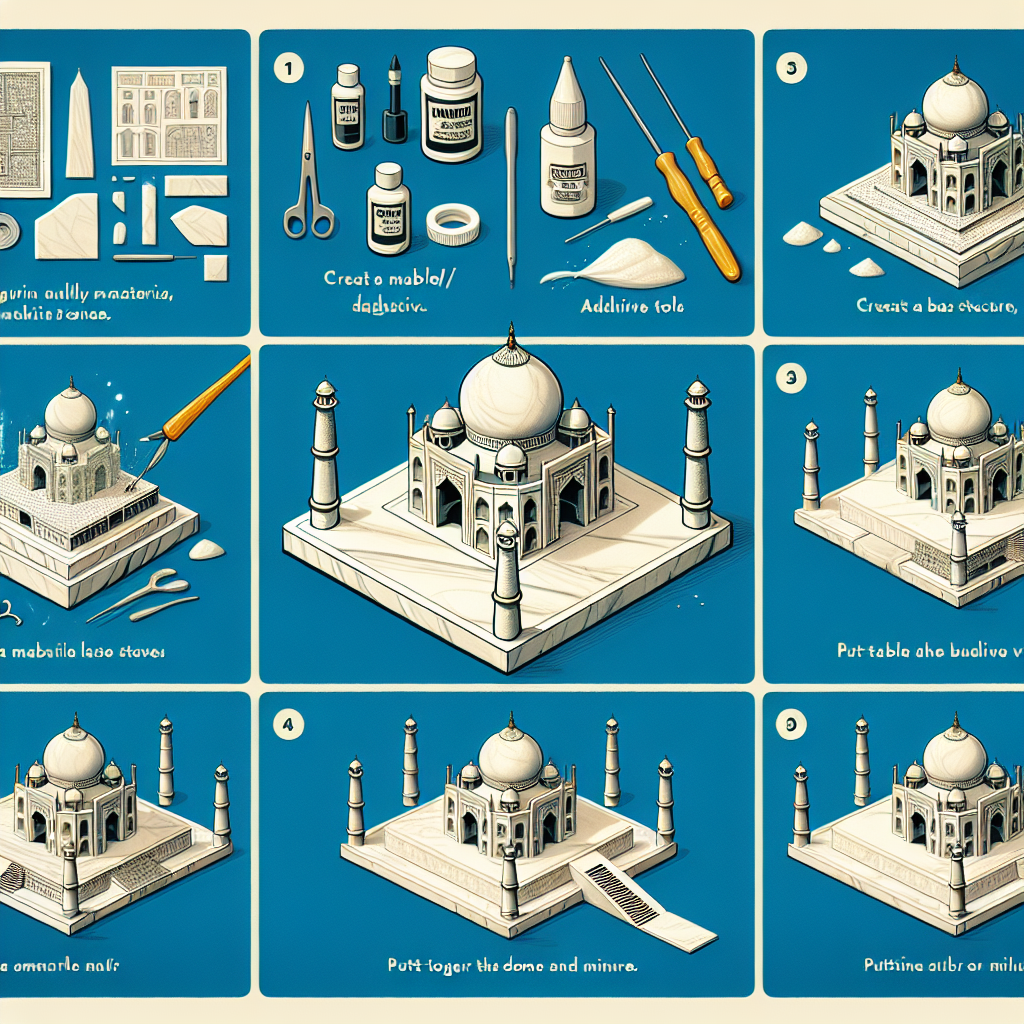
How to make taj mahal
The Magnificent Taj Mahal: A Symbol of Love
Constructed between 1632 and 1648, the Taj Mahal stands as one of the most iconic monuments in the world, epitomizing grandeur and eternal love. This stunning mausoleum was commissioned by Mughal Emperor Shah Jahan in memory of his beloved wife, Mumtaz Mahal. Its unparalleled beauty and intricate artistry continue to draw millions of visitors from around the globe and remain an enduring symbol of India’s rich history.
Historical Context of the Taj Mahal
The Taj Mahal was built during a period of great cultural and architectural flourish in India. The Mughal Empire, known for its unique blend of Persian, Islamic, and Indian styles, influenced the design of this grand structure. The intent behind its construction was not only to house the tomb of Mumtaz Mahal but also to merge beauty with meaning, representing the deep love Shah Jahan had for her.
Architectural Features
The Taj Mahal showcases a rich amalgamation of architectural elements. Its design elements include:
- Marble Dome: The large dome is one of the most recognizable features, symbolizing perfection and harmony.
- Minarets: Four intricate minarets frame the tomb, giving it a unique, elevated presence.
- Symmetrical Gardens: The lush gardens surrounding the mausoleum are designed to reflect paradise, emphasizing tranquility and beauty.
- Inlay Work: The walls are adorned with exquisite inlay work featuring semi-precious stones that depict floral patterns and intricate designs.
How to Experience the Taj Mahal
Visiting the Taj Mahal is a must for anyone intrigued by history, architecture, or romance. Below, we outline a few vital tips on how to make the most of your visit to this iconic monument:
1. Plan Your Visit
Timing your visit plays an important role in enjoying the Taj Mahal:
- Best Time: The optimal time to visit is between October and March, when the weather is cooler.
- Sunrise/Sunset: Visiting at sunrise or sunset offers a breathtaking view with fewer crowds.
- Weekdays: Consider going on weekdays to avoid large crowds that typically gather on weekends.
2. Entering the Monument
The entrance to the Taj Mahal is through a grand gate known as the Darwaza-i-Rauza. Here are a few guidelines to keep in mind:
- Tickets: Tickets can be purchased online or on-site. Online booking is recommended for convenience.
- Security: Be prepared for security checks and restrictions on carrying large bags or food items.
3. Explore the Surroundings
The Taj Mahal is surrounded by stunning gardens, reflecting pools, and historical buildings. Make sure to explore the:
- Mehtab Bagh: A beautiful garden across the Yamuna River, offering a picturesque view of the Taj Mahal.
- Tomb of Itimad-ud-Daulah: Often referred to as the "Baby Taj," this lesser-known site is filled with intricately crafted marble work and is definitely worth a visit.
4. Capture the Moments
Don’t forget your camera as the Taj Mahal presents countless opportunities for stunning photographs. Here are some suggestions:
- Perspective: Experiment with different angles and perspectives to capture the monument’s beauty.
- Reflection: Take shots of the Taj Mahal’s reflection in the pools for a fantastic effect.
The Cultural Significance of the Taj Mahal
The Taj Mahal transcends mere architecture; it holds immense cultural significance. It stands as a testament to the Mughal era's artistic prowess and symbolizes the deep-rooted traditions of love within Indian culture. Over time, it has become a global icon recognized as a UNESCO World Heritage Site and one of the New Seven Wonders of the World.
Conservation Efforts
Over the years, pollution and environmental factors have threatened the integrity of the Taj Mahal. To preserve this historical marvel, various conservation efforts are in place:
- Restoration Projects: Regular restoration projects are conducted to maintain the structural integrity and aesthetics of the building.
- Pollution Control Measures: Steps taken to minimize pollution around the area to preserve the white marble from discoloration.
Community Involvement
Local communities and government bodies actively engage in preserving the site. Volunteers and organizations work together in clean-up drives and awareness programs to educate visitors on the significance of the Taj Mahal.
Creating Your Own Taj Mahal Experience
While you may not be able to create a monument as grand as the Taj Mahal, you can bring elements of its beauty and aesthetic into your everyday life. Here’s how to create your own version at home:
1. Design Inspiration
Consider incorporating Mughal architectural features in your own space. Elements to consider include:
- Intricate Patterns: Use wallpapers or tiles featuring similar floral or geometric patterns.
- Water Features: Install a small fountain or reflective pool to bring tranquility similar to the gardens of the Taj Mahal.
2. Landscaping
When designing your garden, consider the use of symmetry and natural beauty:
- Symmetrical Layouts: Plant trees and flowers in symmetrical patterns to echo the gardens surrounding the Taj Mahal.
- Color Schemes: Choose vibrant flowers that align with the bright and fresh colors of the Taj Mahal’s gardens.
3. Art and Decor
Incorporate art pieces that reflect the intricate craftsmanship you find in the Taj Mahal’s marble inlay work:
- Decorative Items: Look for home décor that uses inlay work or motifs inspired by Islamic art.
- Paintings: Hang artwork that depicts scenes from the Taj Mahal or captures its essence.
Conclusion
The Taj Mahal is not simply a monument; it is a reflection of love, history, and remarkable artistry. From its stunning architecture to the stories of the Mughal Empire, it remains a treasure not just for India, but for the entire world. While many might wonder how to make Taj Mahal, it’s essential to recognize that its true value lies in the emotions and memories it evokes.
As you plan your visit or draw inspiration from its timeless beauty, remember that the essence of the Taj Mahal is rooted in love and passion—a sentiment we can all embody in our own lives.
By Guest, Published on July 24th, 2024